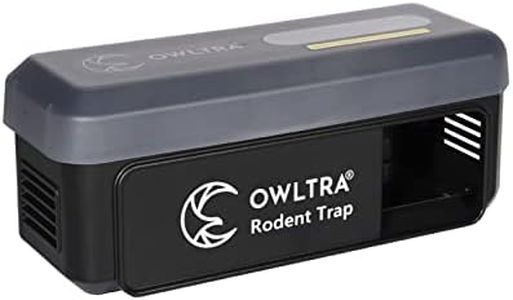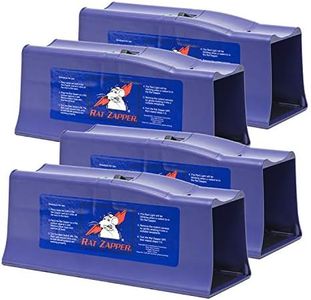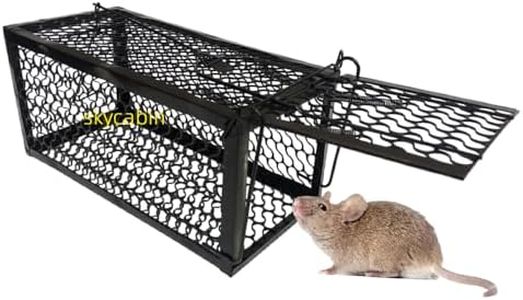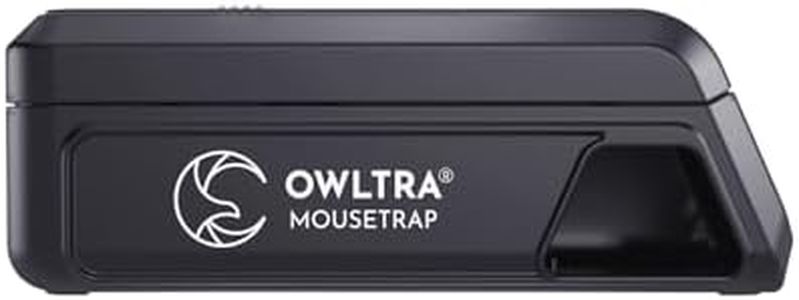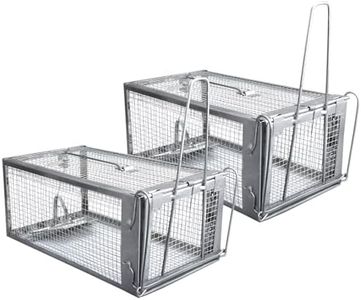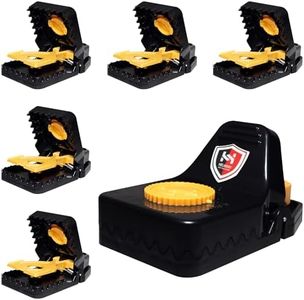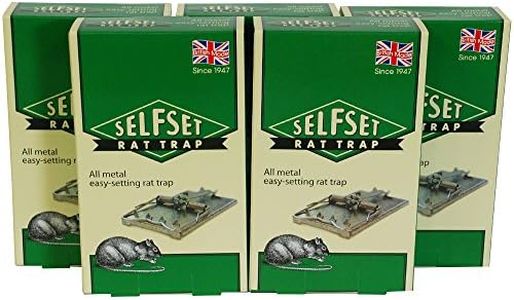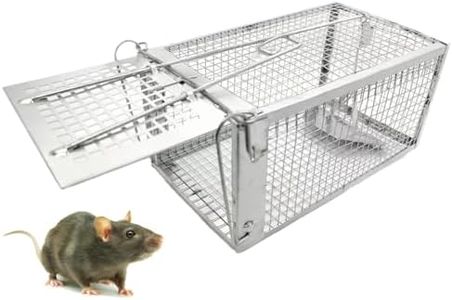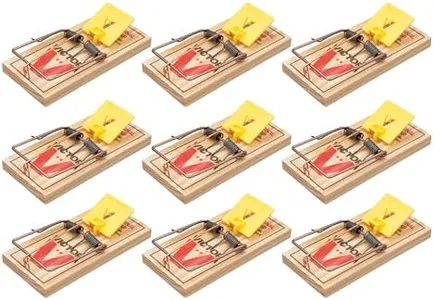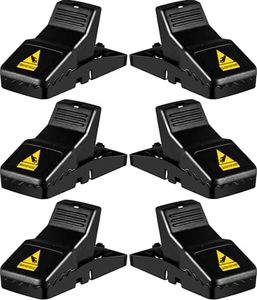We Use CookiesWe use cookies to enhance the security, performance,
functionality and for analytical and promotional activities. By continuing to browse this site you
are agreeing to our privacy policy
10 Best Rat Traps
From leading brands and best sellers available on the web.Buying Guide for the Best Rat Traps
Choosing the right rat trap is important for successfully controlling rodent problems in your home, garden, or business. Before buying, it’s essential to think about where you’ll use the trap, how humane you want the process to be, how easy the trap is to set and dispose of, and any safety concerns you have—especially if you have pets or children. Understanding the available types and their main features will help you select the best option for your situation and needs.Trap TypeTrap type refers to the mechanism used to catch or kill the rat. The main types are snap traps, electric traps, live-catch traps, and glue boards. Snap traps kill rats instantly with a spring mechanism and are popular for being effective and reusable. Electric traps also kill quickly but use batteries and an electric shock. Live-catch traps capture the rat without harming it, letting you release it elsewhere—which may be preferred by those looking for a humane option. Glue boards use a sticky surface to trap rats but may be seen as less humane. You should choose a trap type based on your comfort with handling rodents, whether you want to avoid killing them, and the level of control or reusability you desire.
Size and StrengthSize and strength determine which rodents the trap is suitable for and how reliably it can contain or kill them. Rat traps tend to be bigger and stronger than mouse traps because rats are larger and can escape or break weak traps. If you are dealing with large rats, look for traps labeled specifically for them, as these will have the necessary dimensions and enough force to work effectively. If your rodent problem involves smaller animals, a lighter-duty trap might be sufficient.
Ease of UseEase of use covers how simple it is to set, bait, and clean or dispose of the trap. Some traps require careful handling and setup, while others are more user-friendly and safe to handle. Snap traps can be more difficult and potentially risky to set, while electric and live traps often have mechanisms that make them easier and safer to use. If you want a hassle-free experience or are worried about accidentally snapping your fingers, choose a model known for its straightforward and secure setting process.
Safety FeaturesSafety features are important if you have children or pets who might come into contact with the trap. Some traps have enclosed mechanisms that prevent accidental triggering or contact with the baited area. Electric traps, for example, may have internal chambers to keep fingers and paws out. If safety is a top concern, select a trap with protective designs or opt for live-capture models, which are generally less dangerous for unintended targets.
Reusability and DisposalReusability refers to whether a trap is designed for single or multiple uses, and how easy it is to clean or reset. Some people prefer disposable traps to avoid dealing with dead rodents, while others opt for reusable traps for environmental reasons and cost savings. Consider how comfortable you are with reusing and cleaning a trap, and how convenient you want disposal to be when making your choice.
HumanenessHumaneness is about the level of pain and distress caused to the rat by the trap. Some traps, like snap and electric types, are designed to kill quickly, while glue traps and some poorly designed snap traps may cause prolonged suffering. If you are concerned about the well-being of the animal, look for options marketed as humane—the description should mention instant kill or live capture. Your personal values and preferences will guide how much emphasis you place on this factor.
